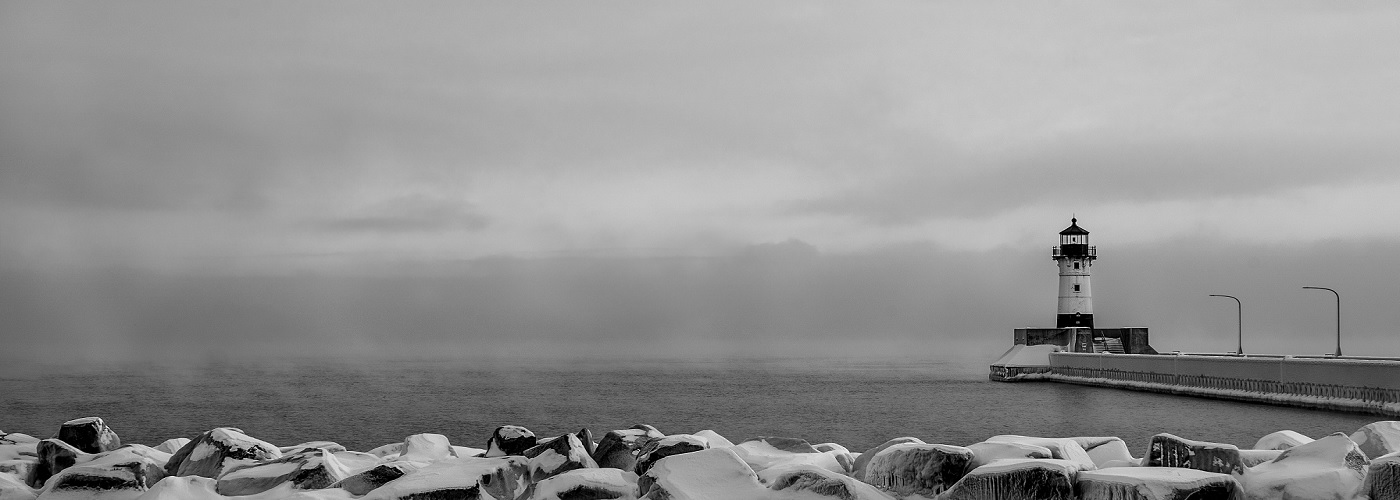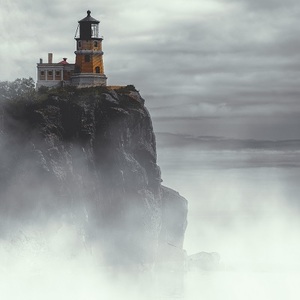

As the winds howled during the storm of late November of 1905, blizzard conditions enveloped the region. Captain and crew were left blinded to what was around them. At this time in history, a compass was the main tool for navigation. Unfortunately, even those could give false readings due to the interaction with the ore deposits in the region. Radio was not available yet for communication, and even lighthouses were fairly sparse on the western side of the lake. This kept the odds stacked against the many ships that headed into the storm.
A 430 foot long steamship, known as the Mataafa, was one of the many boats that struggled mightily in the storm. The Mataafa, captained by Dick Humble, left the port of Duluth just as the storm began to move into the region. After battling the increasing winds and the massive waves for 12 hours, he decided to turn around and head back to Duluth. Unfortunately, he still needed to shoot through the 300 foot wide gap between the two stone piers that jutted out 2000 feet from the shore. During his valiant attempt, a giant wave threw the vessel against one of the piers. With its steering damaged, the vessel remained pinned the entire night. 10,000 or more onlookers gathered around bonfires to witness the tragedy. Tragically, 9 sailors died of exposure that fateful night, while 15 crew members survived long enough to be rescued the following morning by rescuers from the US Lifesaving Service.
The Madeira was a 436 foot barge that was being towed by a steamship. During the storm, its towline became severed, leaving it at the mercy of the storm. It helplessly rode the towering waves towards where the Split Rock Lighthouse stands today (wasn’t constructed until 1910). Once it reached the rocky shore, the barge repeatedly bashed the 70 foot plus cliffside with each wave. Amidst the chaos, a heroic seaman, named Fred Benson, fastened some rope to the vessel and jumped onto the cliffside. Miraculously, he free-climbed to the top of the ice and snow covered cliff. Upon reaching the top, he secured the rope and lowered it down to help his 8 other crewmates to safety. Shortly after, the Madeira split in two and sunk to the bottom (the Madeira wreck site is popular with scuba divers to this day).
Once the storm finally subsided, 33 lives were lost and 29 vessels had been damaged or destroyed. In response to the tragedies of this storm, the call for more lighthouses was heard loud and clear. The Split Rock Lighthouse (located about 50 miles northeast of Duluth off highway 61) was built 5 years later in response to this storm.
A picture of the Mataafa sitting on the end of the pier as the US Lifesaving Service rowed a boat out to the wreck to pick up the survivors on the morning November 29th. https://en.wikipedia.org/wiki/Mataafa_Storm#/media/File:Nov291905LifeSavingCrew.jpg
For an in depth retelling of this epic storm, check out Curt Brown’s book, “So Terrible A Storm: A Tale of Fury on Lake Superior.”
